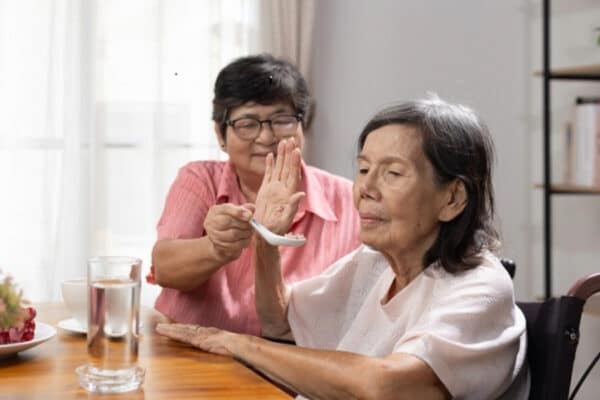So, here is the honesty part, I was extremely sceptical about alternative and complementary therapies for many years. Being a nurse trained in the 90s it was not a subject we were taught in our training and my first few years working on older people’s wards never really provided me the opportunity to experience and see its benefits, as we stuck with the conventional NHS medical treatment model of ‘fixing’ people.
However, when my career led me into social care, I began to appreciate why so many opt for alternative therapies and could see for myself some of the benefits, especially for those that are living with long term conditions or were living with dementia.
Being World Reflexology Day today provides a good opportunity to learn a little more. So, what is reflexology? Well, reflexology is a type of massage that involves applying different amounts of pressure to the feet, hands, and ears. It is based on a theory that these body parts are connected to certain organs and body systems.
Reflexology is a therapy that can help with relaxation, ease anxiety (we could all do with a bit of that in these current times) and aid restful sleep. It is also said to be a good choice for older people, in particular those with cognitive decline conditions. Further information can be found via https://www.aor.org.uk/what-is-reflexology/.
Reflexology must only be practised by trained professionals, they will need to check that service users don’t have allergies or any medical conditions in particular to the use of different scented creams for example. It is always worth checking in with the service user’s GP to ensure there are no contraindications with medical treatment.
Visiting therapists must follow COVID-19 government guidance which includes following the standard infection control procedure of washing hands between service users, using fresh towels for each service user, using skin cleansing wipes, and using antibacterial wipes on bottles. They must also follow visiting policies that are in place for all visitors to include social distancing and the wearing of masks. Visiting therapists have been able to work within these guidelines to offer therapies in gardens and other outside areas (on a nice day), so it’s definitely worth an environmental risk assessment to see if your service can accommodate.
In addition, it is important to ensure that the visiting professional presents current certificates of practice, is a member of the Complementary and Natural Healthcare Council (CHNC) and has valid insurance in place. A visiting healthcare professional policy should also be in place that includes professional boundaries, partnership working and how staff must respond in the event of any concerns with practice.
Many social care services are now developing in house, their own team of specialists that can offer complementary therapies, a great way for staff retention and development as well as making more accessible these valuable therapies (especially during these challenging times). Further information can be found via the following sites:






